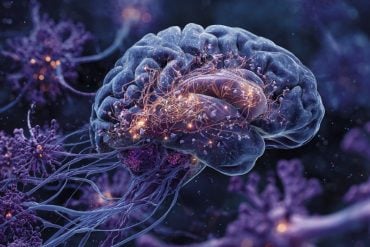Summary: The viral phrase “touch grass” may be more than internet humor—science shows that engaging with nature and music can significantly boost emotional and physical well-being. A new review found that combining these experiences—such as listening to music outdoors, gardening while singing, or caring for animals—can improve mood, reduce stress, and ease symptoms of anxiety and depression.
Unlike traditional therapies, music- and nature-based approaches rely on multi-sensory engagement, encouraging people to reconnect with their surroundings and express themselves creatively. Researchers say these accessible, low-cost methods could help people of all ages, including trauma survivors and older adults with dementia, improve overall wellness.
Key Facts
- Dual Benefits: Combining music and nature enhances mood, lowers stress, and supports recovery from anxiety and depression.
- Multi-Sensory Healing: Therapies engage sight, sound, touch, and smell—anchoring individuals in the present moment.
- Accessible Therapy: These approaches are adaptable for trauma survivors, people with disabilities, veterans, and older adults.
Source: George Mason University
While the expression “touch grass” is most often used as a meme to teasingly tell fellow internet users to log off and venture outside, there is research-backed evidence that reconnecting with sensory experiences only found in the physical world is highly beneficial for overall well-being.
Michelle Hand, a licensed clinical social worker and holistic-therapy researcher, compiled data affirming that music and nature-based therapy can improve emotional, mental, and physical health outcomes.

The reason? Unlike more traditional therapies, music and nature-based treatment prioritize multi-sensory experiences (e.g., potentially integrating sounds, sights, smells, and touch stimuli that anchor people in the present moment) as well as choice and flexibility.
“The combined therapeutic use of music and nature facilitates self-expression, which can improve mood and emotional well-being, with potential to simultaneously decrease anxiety, stress, and symptoms of depression, all of which can impact various aspects of daily life, health and wellness,” said Hand, an assistant professor of social work in George Mason University’s College of Public Health (CPH).
Previous studies examined music and nature separately, but this review explored different studies with the simultaneous use of both elements. Hand, along with gerontology research specialist Emily Ihara, and George Mason social work alumni Morgan Moore and Madison Shaw, identified 884 scholarly articles across six databases relating to the combined therapeutic use of music and nature.
Of these, eight peer-reviewed articles met their search criteria. For example, articles featured activities where participants could choose to care for animals, tend to gardens, and sing and dance outdoors. Hand’s conclusions present the limitless possibilities for tailored non-medication mental health treatments.
“Music- and nature-based strategies can offer adaptable low-cost, multi-sensory approaches for people of all ages, those living with disabilities, veterans and non-veterans, individuals who have experienced trauma, as well as for older adults living with dementia,” Hand said.
So, while “touch grass” may have begun as a social media jest, it is actually pretty sound advice.
Key Questions Answered:
A: The combination provides a powerful, multi-sensory experience that improves mood, reduces stress, and encourages emotional expression.
A: They are flexible, low-cost, and can be adapted for people of all ages and abilities, from children to older adults with dementia.
A: Yes. Reconnecting with natural environments and sensory experiences—especially when paired with music—has measurable mental and physical health benefits.
About this mental health research news
Author: Mary Cunningham
Source: George Mason University
Contact: Mary Cunningham – George Mason University
Image: The image is credited to Neuroscience News
Original Research: Open access.
“Integrating music and nature: a scoping review of research on interventions involving both music- and nature-based strategies for mental health and wellbeing” by Michelle Hand et al. Frontiers in Human Neuroscience
Abstract
Integrating music and nature: a scoping review of research on interventions involving both music- and nature-based strategies for mental health and wellbeing
Introduction: Both music-related and nature-based therapeutic activities can enhance wellbeing, physical, social, emotional, and mental health, and recovery from posttraumatic stress. While music- and nature-based therapeutic approaches have been studied individually, research is limited on the holistic combination of music- and nature-based therapeutic interventions.
Thus, a scoping review was conducted to chart primary research on the combined use of music- and nature-based therapeutic strategies and their effects on overall wellbeing, and within this scope, potentially on mental and behavioral health outcomes.
Methods: Included were peer-reviewed articles reporting primary research findings on how (if at all) the combined use of both music and nature-based interventions impacted wellbeing and thus, mental and behavioral health. All studies had to be reported in English.
Excluded were studies that did not involve both nature-based and music-related therapeutic activities, those not involving primary research, and articles without a clear discussion on potential impacts on wellbeing, mental, or behavioral health.
After applying this inclusion and exclusion criteria, 884 potentially relevant peer-reviewed articles were identified, 23 of which were preliminarily screened in upon abstract and title review. After full text reading, eight of these articles were deemed eligible for the review and were thematically analyzed.
Results: Four themes were identified from the reviewed studies: (a) music- and nature-based activities yield benefits across various aspects of wellbeing, (b) multiple activities can be combined and adapted for diverse contexts and populations, (c) more research is needed on the combined therapeutic use of music and nature, and (d) choice and expression should be prioritized, which music and nature can facilitate.
The primary focus of the reviewed studies was on how music-based interventions in outdoor or natural settings can impact multiple aspects of wellbeing, particularly emotional wellbeing, and with this, improved mood.
Discussion: The results suggest that combining music and nature-based therapeutic approaches can improve mental and behavioral health by enhancing multiple aspects of wellbeing. For example, music-making in natural settings can foster deep connections with nature and spiritual wellness. Implications for future research are provided, as further research is needed on the combined use of music- and nature-based therapeutic activities.






